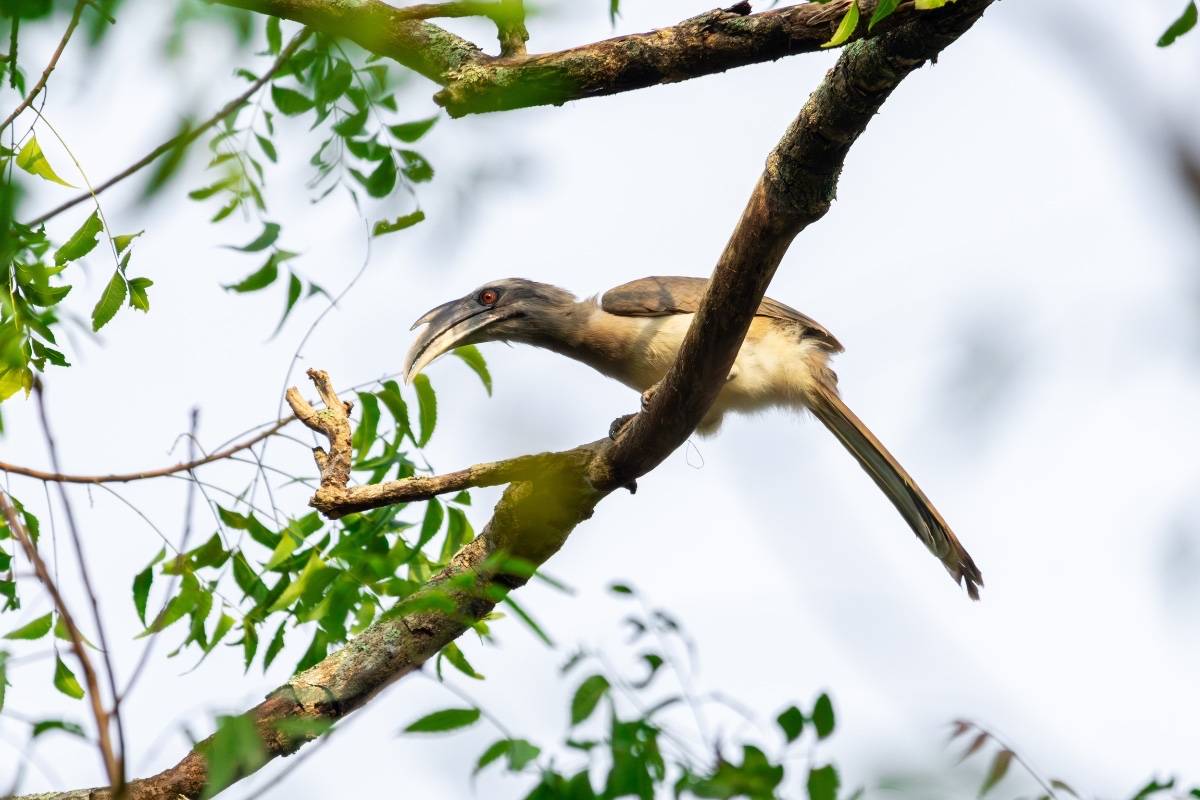In the Indian subcontinent, the Indian gray hornbill (Ocyceros birostris) is a common hornbill. It frequently appears in pairs and is mainly trees. Its body is covered with grey feathers, and its stomach is either light grey or drab white. A casque reaches to the horn’s point of curvature, and the horn itself is either dark grey or black.It thrives in the huge avenue trees, making it one of the rare hornbill species found in urban environments. At approximately 61 cm (24 in) in length, the Indian grey hornbill is a medium-sized hornbill.

Silent Watch The Indian Grey Hornbill surveys its surroundings.
There is a tiny hint of a light supercilium, while the upper parts are greyish brown. Additionally, the ear coverts are darker. Moreover, the wing’s dark brown flight feathers have a white end. Similarly, the tail features a dark subterminal stripe along with a white tip. Furthermore, its iris is red, and it has eyelashes attached to its eyelids.

Poised Gaze A moment of stillness, eyes scanning sideways.
The casque is angled and thin. The culmen and lower jaw are yellow in color, and the male species has a greater casque on the darker bill. In males, the skin that is exposed surrounding the eye is dark, while in females, it can occasionally turn light red. The female’s bill is more yellow in color, having black on the casque and its lower part. The juveniles’ naked skin around the eye is a dull orange, and they lack the casque. Up to roughly 2,000 feet (610 meters), the species exists primarily on the plain.
It is located southwest from the mountain range of the Himalayas, between the delta of the Ganges to the east and the Indus system to its west. In the drier western area, it can cause local migrations. It lives in cities with old avenue trees and appears in Dharamsala (Himachal Pradesh) during the summer and rainy season (May to September 2017) at elevations of 1500 to 1600 masl, typically in pairs. It shares little in common with the Malabar Grey Hornbill of the Western Ghats.

Still vigil A Indian grey hornbill is scanning its surroundings.
It makes a scream-like sound, much like a black kite. Additionally, their flight is heavy, with glides and folds. They usually appear in small groups or pairs. Furthermore, the egg clutch consists of one to five exactly symmetrical white eggs, while the breeding period extends from April to June. Moreover, Indian grey hornbills typically build their nests in tree hollows, usually on high trees. Over time, a current hollow may gradually expand to fit their needs. The male feeds the female through a small vertical hole that remains after the female enters the nest hollow and connects the entrance. The female uses its dung and mud pellets that the male gives to close the entrance to the nest.

Sharp Eyes A sharp and focused gaze across surroundings.
The female incubates the eggs and removes her flying feathers inside the nest. To remove urine through absorption and adsorption and regulate nest temperature and the male regularly feeds bark pieces to the nest occupants. As the chicks mature and the female’s feathers regenerate and they tear the nest apart.
Copyrights : All the photos and texts in this post are the copyright of John Thomas and Creative Hut Institute of Photography and Film. No one may reproduce them, in full or part, without the explicit approval of the rightful owners.


